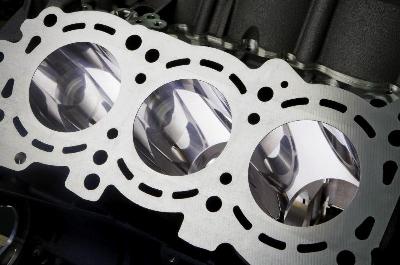Mercedes-Benz will use its pioneering twin-wire arc spraying technology called NANOSLIDE technology in the series production of its V6 diesel engines. Since 2006, the company has been utilizing the technology successfully in its 6.3-L AMG engines.
 NANOSLIDE covering inside the cylinders
NANOSLIDE covering inside the cylinders
The novel NANOSLIDE technology employs the twin-wire arc spraying to melt and spray carbon/iron wires onto the light-weight aluminum crankcase’s cylinder surfaces utilizing a gas flow to produce an ultra-fine to nano-crystalline layered iron coating. A unique honing process is then employed on the NANOSLIDE coating to give an exceptional mirror-like finish, which now has a thickness of just 0.1-0.15 mm.
The honing process also creates pores in the material to hold oil, which in turn offers sufficient level of lubrication to the piston assembly. The smooth coating with fine pores decreases wear and friction between the cylinder wall and the piston assembly. Lower emissions, lower fuel consumption and lower engine weight are the other benefits of the technology.
The NANOSLIDE technology sets new benchmarks in the manufacturing of cylinder linings. Mercedes-Benz released a 6.3 litre V8 in July 2005, the first production engine in the world with cylinder walls featuring a nano-crystalline iron coating. Since 2006, the twin-wire arc sprayed coating has become a critical component of the company’s all 6.3-L AMG engines. The technology decreases 4.3 kg of engine weight when compared to the previous engine, which in turn reduces the fuel consumption a further 3%. The technology has several novel ideas and inventions and is protected by more than 40 patents and over 90 patent families.